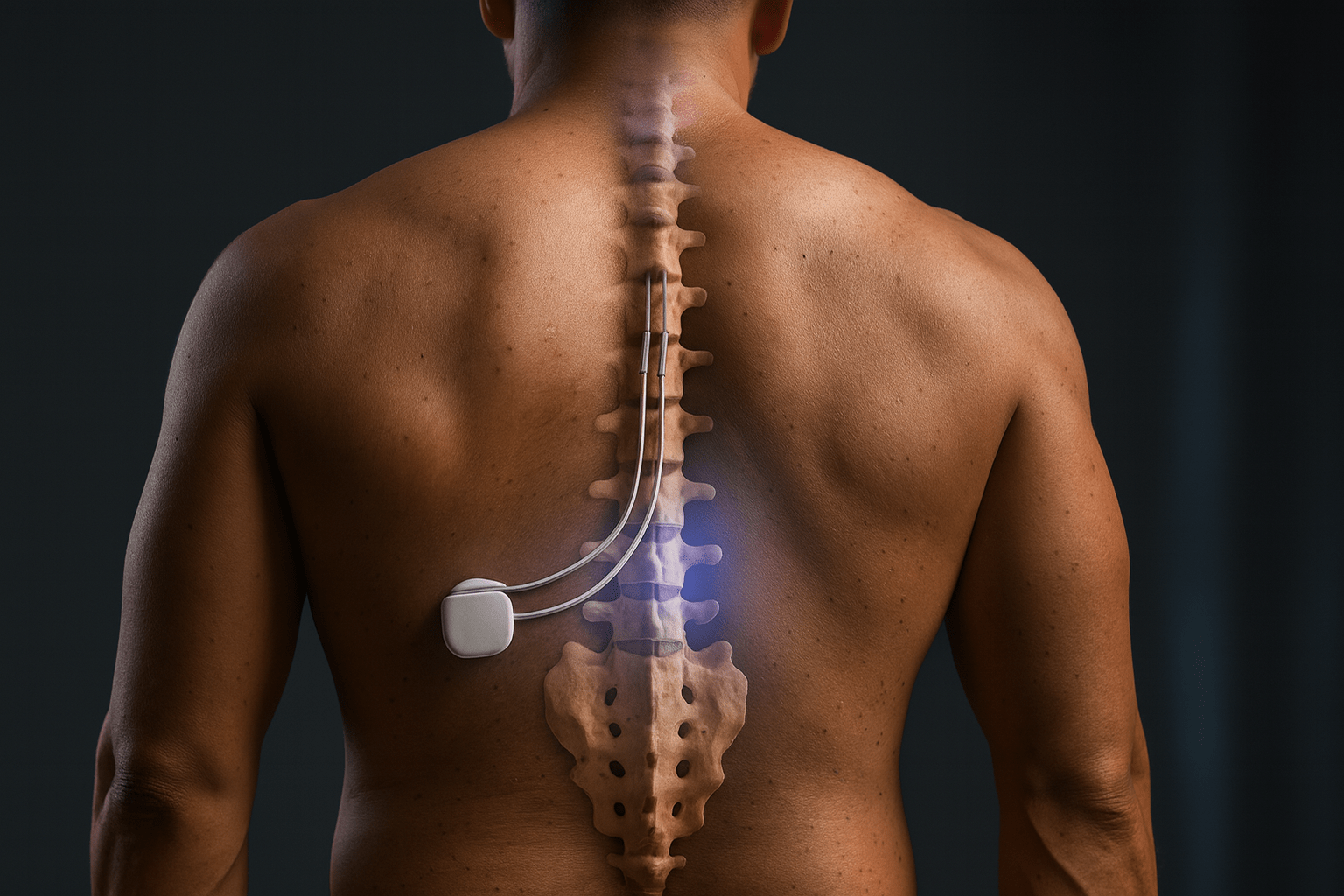
What is a Spinal Cord Stimulator?
A spinal cord stimulator is a pain-relieving implantable device that uses electrical impulses to target muscles on the spine to ultimately alter how the brain senses pain. They enable patients to send the electrical impulses using an exernal remote control whenver pain occurs.
Spinal cord stimulators consist of thin wires (electrodes) and a small, pacemaker-like battery pack (the generator). The electrodes are placed between the spinal cord and the vertebrae (epidural space). The generator is placed under the skin, usually near the buttocks or abdomen.
To implant a spinal cord stimulator, The Morrison Clinic™ relies upon highly specialized training in interventional pain management, under X-ray and/or ultrasound guidance. Read more about your spinal cord stimulator surgery and treatment options at our South Florida neurosurgeon clinic today.
To implant a spinal cord stimulator, The Morrison Clinic™ relies upon highly specialized training in interventional pain management, under X-ray and/or ultrasound guidance. Read more about your spinal cord stimulator surgery and treatment options at our South Florida neurosurgeon clinic today.
Performing Spinal Cord Stimulator Surgery
Spinal cord stimulator surgery require two different procedures: the trial and the implantation.
Step 1: Spinal Cord Stimulator Trial
The first step is a trial period. Dr. Morrison will implant a temporary device for you to test out. Guided by a specific type of X-ray called fluoroscopy, your surgeon will carefully insert the electrodes in the epidural space of the spine.
The location of your pain affects where these electrodes are placed, and we ask for your feedback on the accuracy of the placement location during this step.
This trial procedure typically requires only one incision in your lower back to place the electrodes.
For about a week, you will evaluate how well the device reduces your pain. The trial is considered a success if you experience a 50% or greater reduction in pain level.
If unsuccessful, the wires can easily be removed in the clinic without damage to the spinal cord or nerves. If successful, surgery is scheduled to permanently implant the device.
Step 2: Spinal Cord Stimulator Implantation (Surgery)
During the permanent implantation procedure, the generator is placed underneath the skin and the trial electrodes are replaced with sterile electrodes. Unlike the trial electrodes, these will be anchored by sutures to minimize movement.
The implantation can take about 1-2 hours. It is usually performed as an outpatient procedure.
After local anesthesia is administered, Dr. Morrison will make one incision (typically along your lower abdomen) to hold the generator. He will make yet another incision — along your spine — to insert the permanent electrodes.
The incisions are roughly four inches — the “long ways” size of a credit card.
As in the trial procedure, fluoroscopy is used to determine where the electrodes are placed.
Once the electrodes and generator are connected and running, Dr. Morrison then closes the original incisions.
Am I a Candidate for Spinal Cord Stimulation?
Our South Florida neurosurgery office first looks to ensure that spinal cord stimulation surgery is the ideal treatment for your specific case — and that it is likely to provide significant relief from your chronic back pain.
To make this recommendation, the pain specialist on your case often orders imaging tests and/or psychological evalution. Some insurance companies accepted at our neurosurgeon clinic require psychological screening to ensure disorders like depression or anxiety aren’t worsening your pain.
Patients who benefit the most from spinal cord stimulation are generally those who:
- Have not experienced sufficient pain relief with medications, less-invasive therapies or prior spine surgeries
- Do not have psychiatric disorders that would decrease the effectiveness of the procedure
Schedule an e-consult here to learn more about your candidacy for spinal cord stimulator surgery at The Morrison Clinic™.
Conditions that Spinal Cord Stimulator Surgery Effectively Treats
Spinal cord stimulation is used most often after non-surgical back pain treatment options have failed to provide sufficient relief.
It may also be used to treat or manage different types of chronic pain, including back pain — especially back pain that continues even after surgery (failed back surgery syndrome).
- Post-surgical pain
- Arachnoiditis (painful inflammation of the arachnoid, a thin membrane that covers the brain and spinal cord)
- Heart pain (angina) untreatable by other means
- Injuries to the spinal cord
- Nerve-related pain (such as severe diabetic neuropathy and cancer-related neuropathy from radiation, surgery or chemotherapy)
- Peripheral vascular disease
- More
It is typically used along with other pain management treatments, including medications, exercise, physical therapy and relaxation methods.
Most patients leave the same day as their procedure — once the anesthesia has worn off. For several days after surgery, your incisions may be painful. Try not to stretch, twist or reach, which could pull at the incisions. Dressings will be placed over the incision sites, which can be removed after about 3 days. In most cases, incisions heal within about 2-4 weeks after surgery.
Dr. Morrison will provide you with a specific recovery plan. Please note that light activity is a common recommendation for roughly 2 weeks following surgery.
Once your surgeon approves you for regular activity, you can return to work and drive again (with the stimulator turned off). This is typically 1-2 weeks after surgery.
Aftercare and Positively Influencing Recovery
- For one to two days, you’ll walk around with the help of a nurse until you’re able to walk on your own again. Your urination habits and frequency will be closely monitored.
- For the first few days after surgery, you’ll undergo blood tests and vision tests to make sure your vision hasn’t been affected. Blood will likely drain from your nose periodically.
- After leaving the hospital, you’ll return in about six to eight weeks for a follow-up appointment. You’ll meet with our neurosurgeon’s office to see how your body is responding to possible changes in hormone production. This appointment may include a head scan, as well as blood and vision tests, to help ensure you’re on the path to a full recovery.
Until directed, our neurosurgeon office also recommends patients avoid:
- Blowing our cleaning your nose
- Bending forward
- Lifting objects heavier than 10 pounds
- Swimming, taking a bath, otherwise placing your head under water
- Driving or operating large machinery
Spinal cord stimulation can improve overall quality of life and sleep, and reduce the need for pain medicines.

